Story and images with thanks Greg Moore
Upon learning of the sad passing of Phil Moore earlier this year, Greg Moore kindly reached out to the club to share a few memories of Phil and the Lotus Super 7 they both owned. Read on, and enjoy.
The Phil Moore Lotus Super 7
Thanks Greg Moore
Some time ago I read an article in ‘SA Lotus Torque’ October 2020 relating to two Lotus 7s, one belonging to Phil Moore and the other to Mike Bennett. Sadly I have just read that Phil passed away on 12th May 2021.
I only knew Phil through contacting him in the mid 1990s, having been prompted to call him after reading an article in ‘Sports Car World’ August 1986 regarding his collection of cars which included a Lotus Super 7. This was of special interest to me as I was the original owner of Phil’s Lotus Super 7, reg no: SA 553 095.
Phil and the Super 7 at Stirling
Some years ago, Phil was kind enough to invite me to spend an afternoon with him, and the Lotus, at his Stirling property. A fantastic afternoon which brought back many happy memories, not the least of which was remembering how remarkable a car it was. I thought that Club Lotus Australia members might be interested in the background of this car.
I purchased this car from Derek Jolly, of Deccas Place, Adelaide, on the 25th June, 1965, for £1475 (pre decimal). When I last met Phil, he’d told me that he was also looking at buying it at this time but I beat him to the gun.
Front on, at Devil’s Elbow
My understanding is that Derek’s Lotus agency received the car, in kit form, with a view to racing. However, Derek was unable to do so because of continuing problems with his legs, possibly due to his Albert Park crash in the Lotus 15. When I first saw it at his Sydenham Road, Norwood workshop (I think the mechanic was Arthur Williams), the motor and gearbox were still out. I was able to spend time with Arthur installing the engine, gearbox and accessories.
Before registration and delivery I had the car painted a pale blue/grey and put over a weighbridge. It weighed in at 9.5 Cwt – 480 Kg in today’s terms. The engine was a 1498cc Ford 116E overhead valve with a pre-crossflow head modified by Cosworth, running twin choke 40DCOE Webers and putting out 95bhp at the flywheel.
A profile shot at Devil’s Elbow
The gearbox was a four-speed close ratio. Independent front suspension “part Triumph Herald” and a live rear axle, which came from a ‘Standard 10’ and was located by Panhard rods and a triangulated A frame bushed to the bottom of the diff housing. The tyres were Dunlop C41 and, needless to say, at 5.20 x 13 inch, they only lasted about a month!
My first drive of it was rather nerve racking, as after picking it up Arthur asked if I could give him a lift into Adelaide and drop him off at the North Terrace, King William street intersection. All OK except it was peak hour. As expected the radiator merrily boiled away. Increasing the size of the header tank made a big difference.
In the relatively short time that I owned it, I made a number of improvements, and it’s great to see that they are still in the car, even after 53 years, as they greatly added to the driving experience.
Doug Trengrove alloys
I replaced the stock windscreen, which was obviously not designed in a wind tunnel, with a couple MG TC alloy racing windscreens, shaping the alloy bases to fit the Lotus body profile. I also widened the rear mud guards and added wheels with wider chromed spun steel rims with alloy centres. These were made by Doug Trengove, who was making them for his own open wheelers.
Finally, I had the head ported, polished and shaved off 20thou by Elfin Sports Cars (it cost a cool $29.50). On Peter Bradey’s dyno (Adelaide Autotune Service, another cool $15.00) it was showing over 80 bhp at the rear wheels, which equates to around 105bhp at the flywheel so the $29.50 was well spent at Elfin.
I owned the car for a little under two years, and during this time covered around 24,000 miles. It was very reliable during this time, with the only issue being the continual breakage of the weld holding on the bracket for the bush locating the A frame. A real design fault, and so bad I eventually had to fit a new axle housing. Minor issues included a broken head stud and the radiator filler extension breaking through metal fatigue.
This photo of Phil racing at Mallala may be the first time he raced it. It shows that he had added stabilising bars to try and stop the rear axle moving. Phil told Greg that these only lasted part of the race meeting, as they ripped the locating bushes on the side of the body out.
Towards the end of 1966 I sold the Super 7 to Globe Products, who wanted to race it. Noel Hurd drove it in one race meeting at Mallala but had problems with the throttle sticking open and ended up spending more time off the circuit than on it. Hurd then went on to race the Globe Products Elfin 400 which, interestingly, is almost the same as the original duco color of the Lotus.
Globe only had the car for a brief time and it then passed on to another chap in Adelaide. It may have been he who changed the color to the British Racing Green in which it remains today. I don’t think he drove it much. Phil probably bought it from this third owner in 1967.
I experienced the greatest fun ever with this car discovering that it really was an E-Type Jaguar eater, amongst other things, and I guess my recollections are best summed up by quoting Phil from the Sports Car World magazine of 1986 “Today, the Lotus is an absolute delight to drive, it’s so responsive, particularly the engine” and from your own article “ Phil delighted in telling people that he’d owned the 7 for 53 continuous years, and of the joy that driving it gave him.”
Greg Moore
Kalamunda, Perth WA
Phil with Maggie and the Super 7
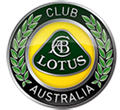
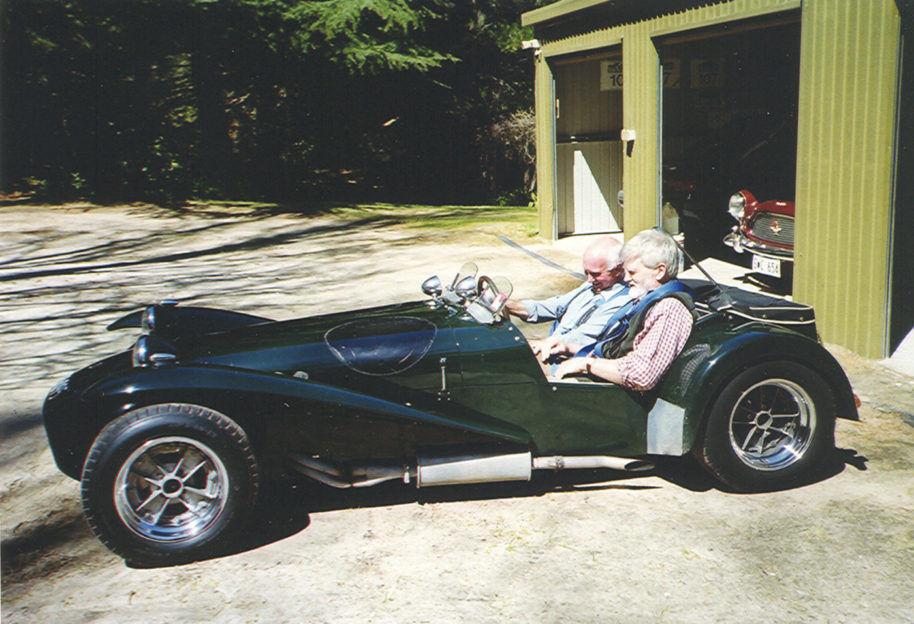
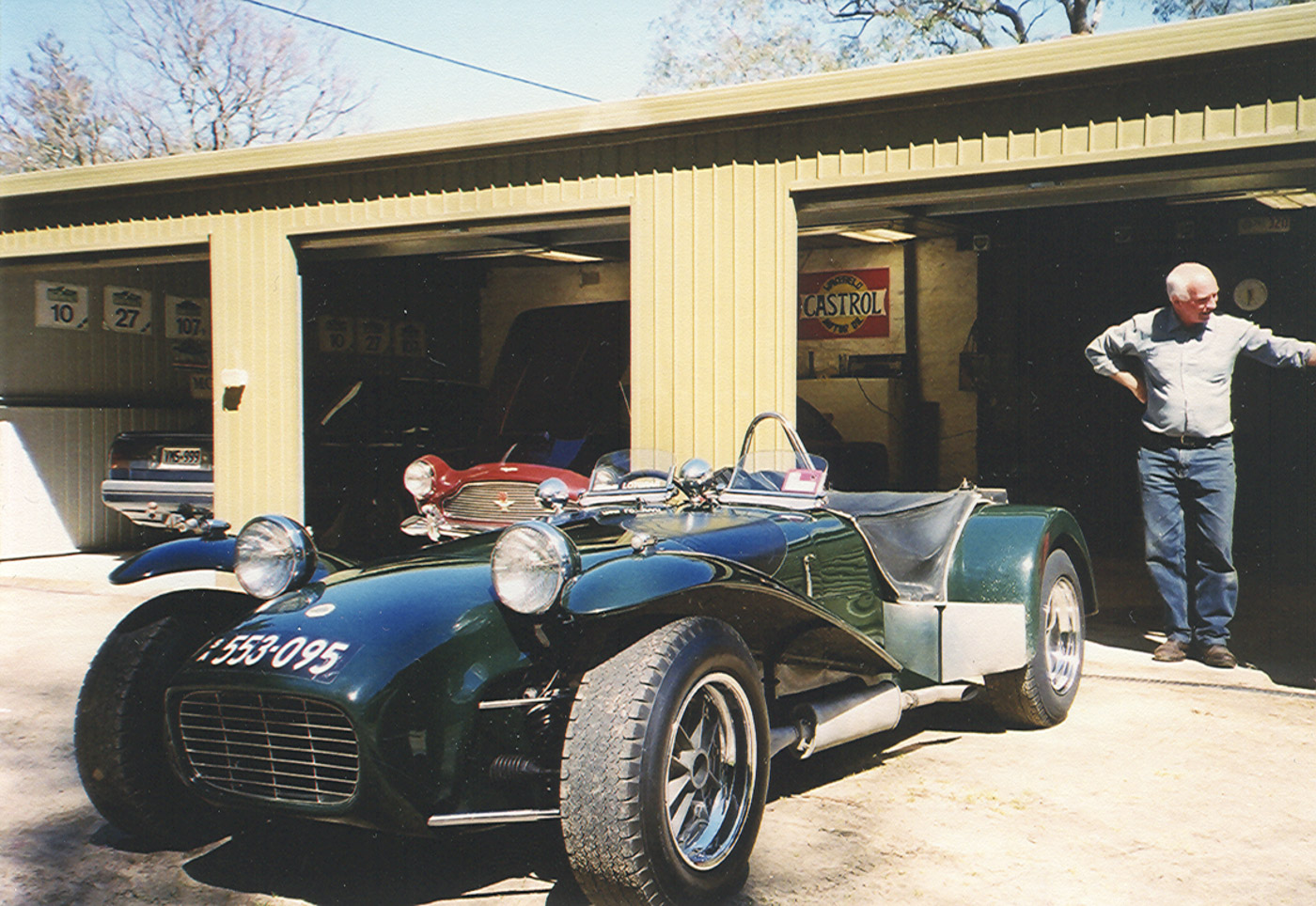
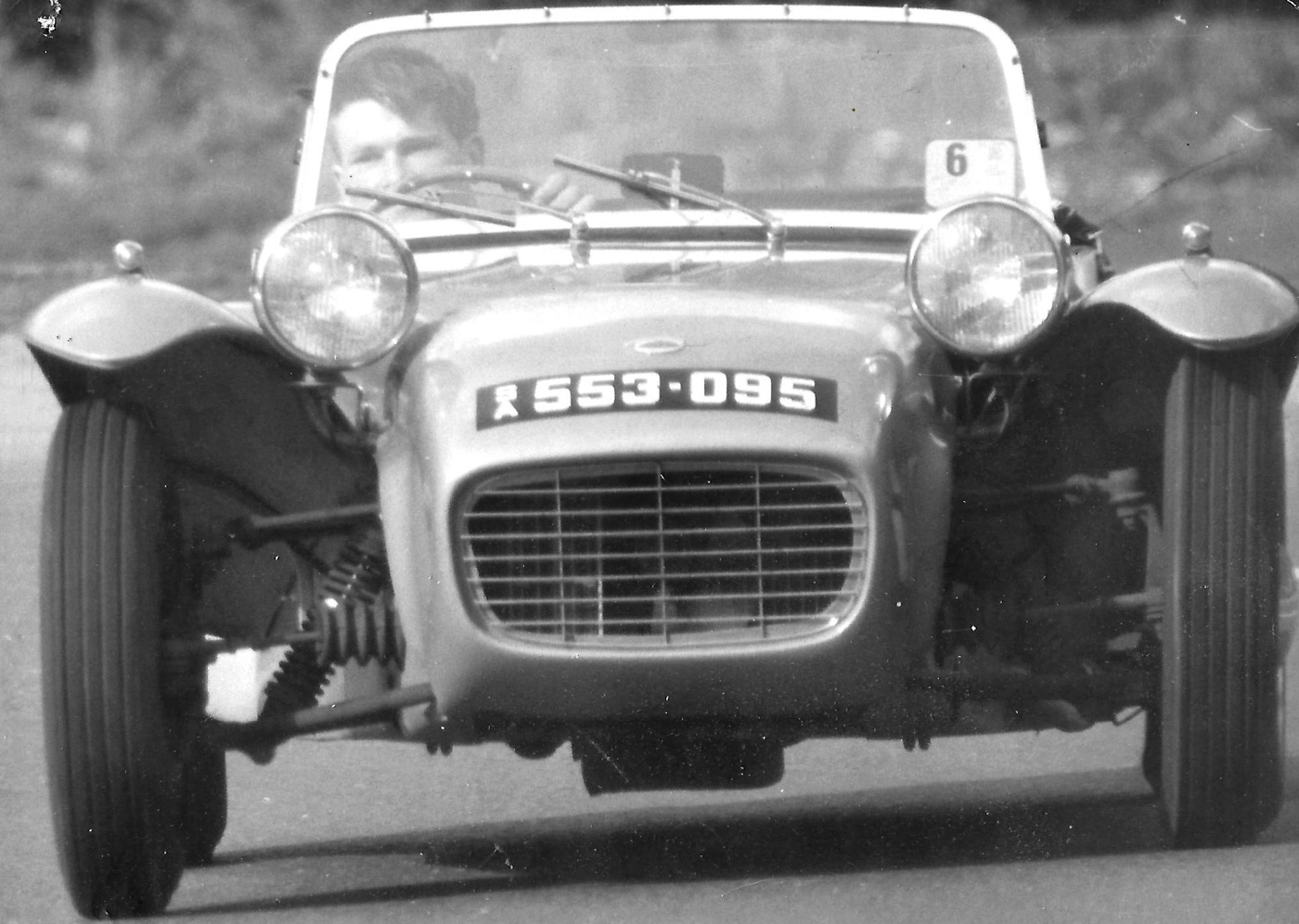
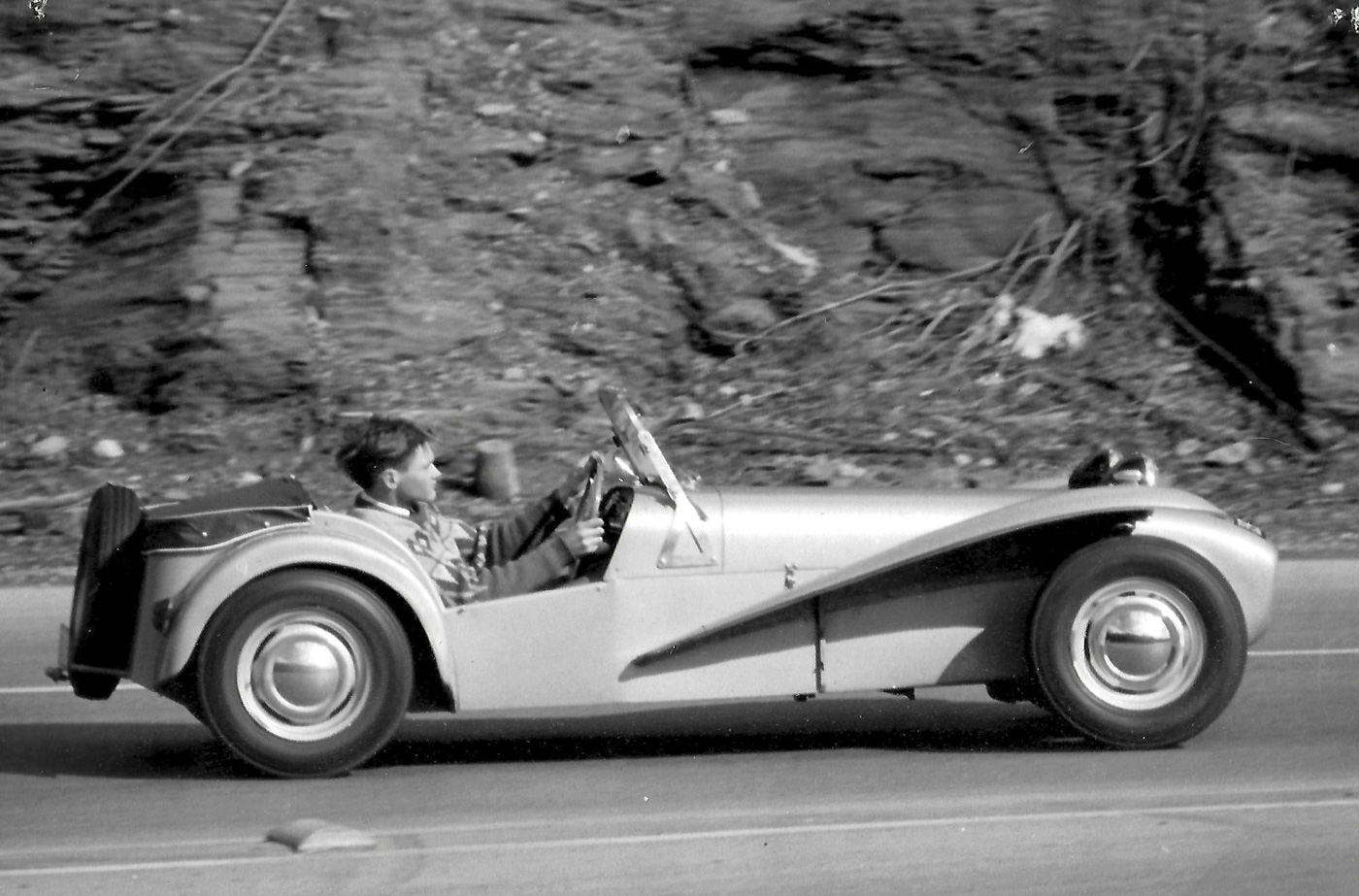
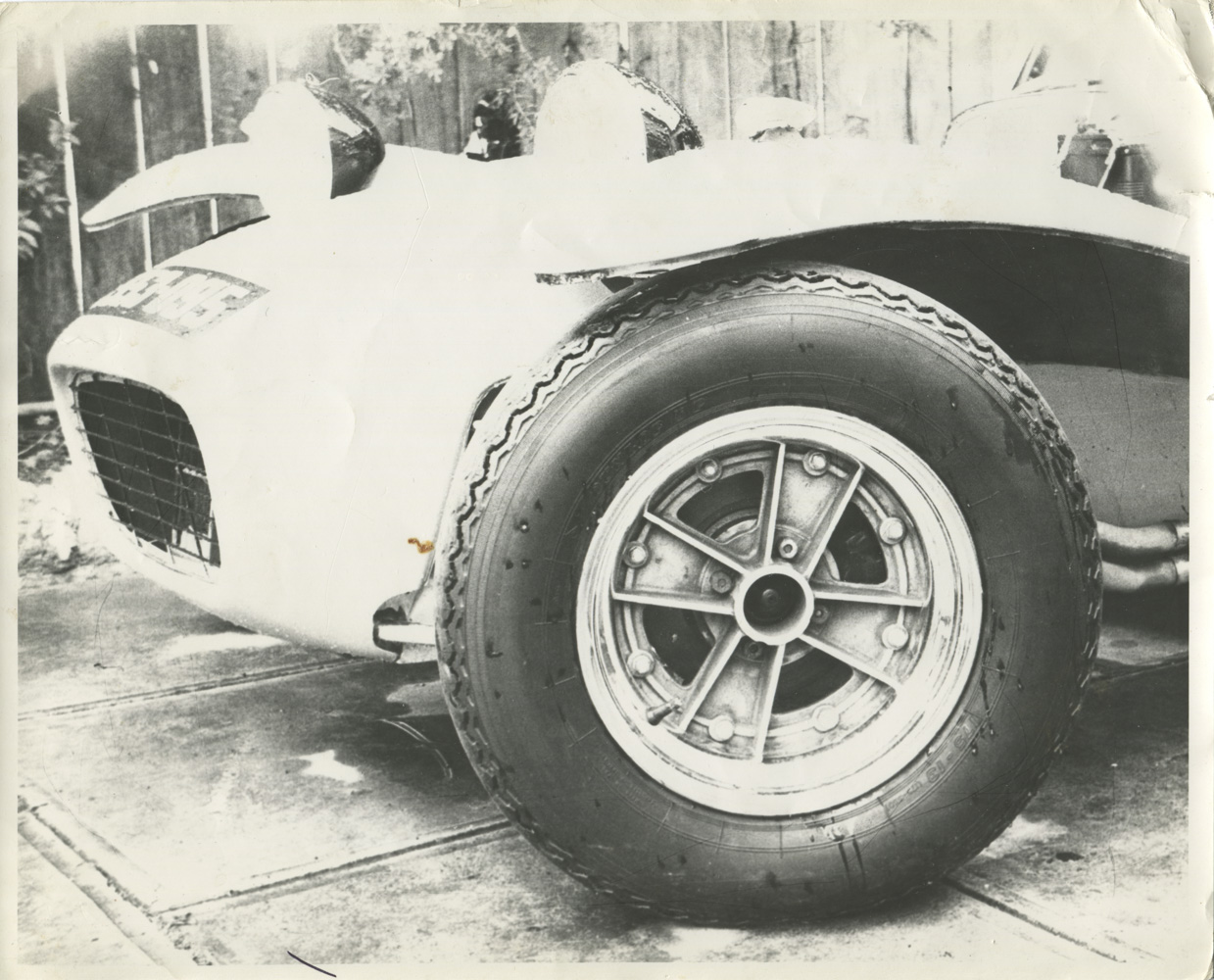
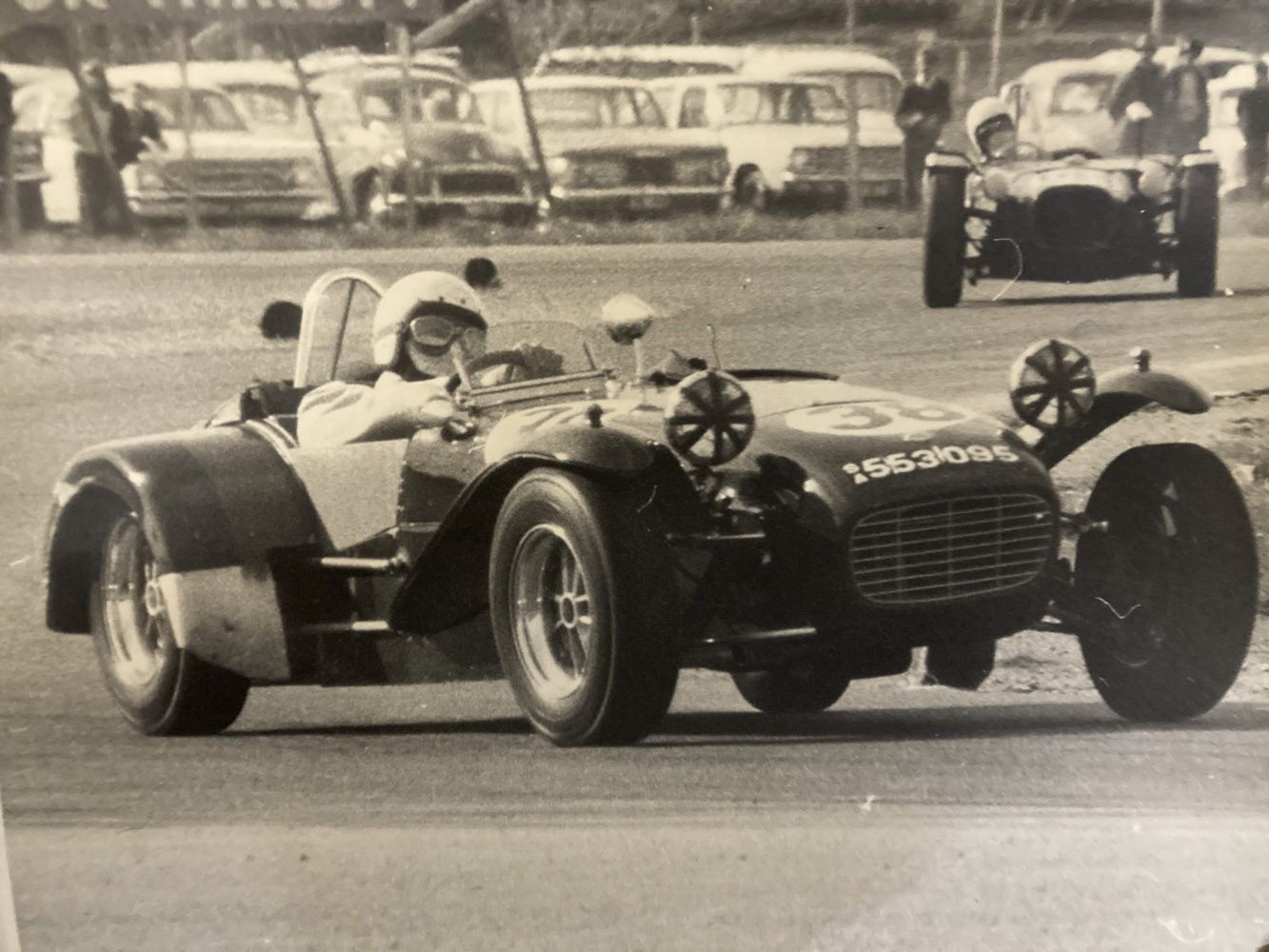
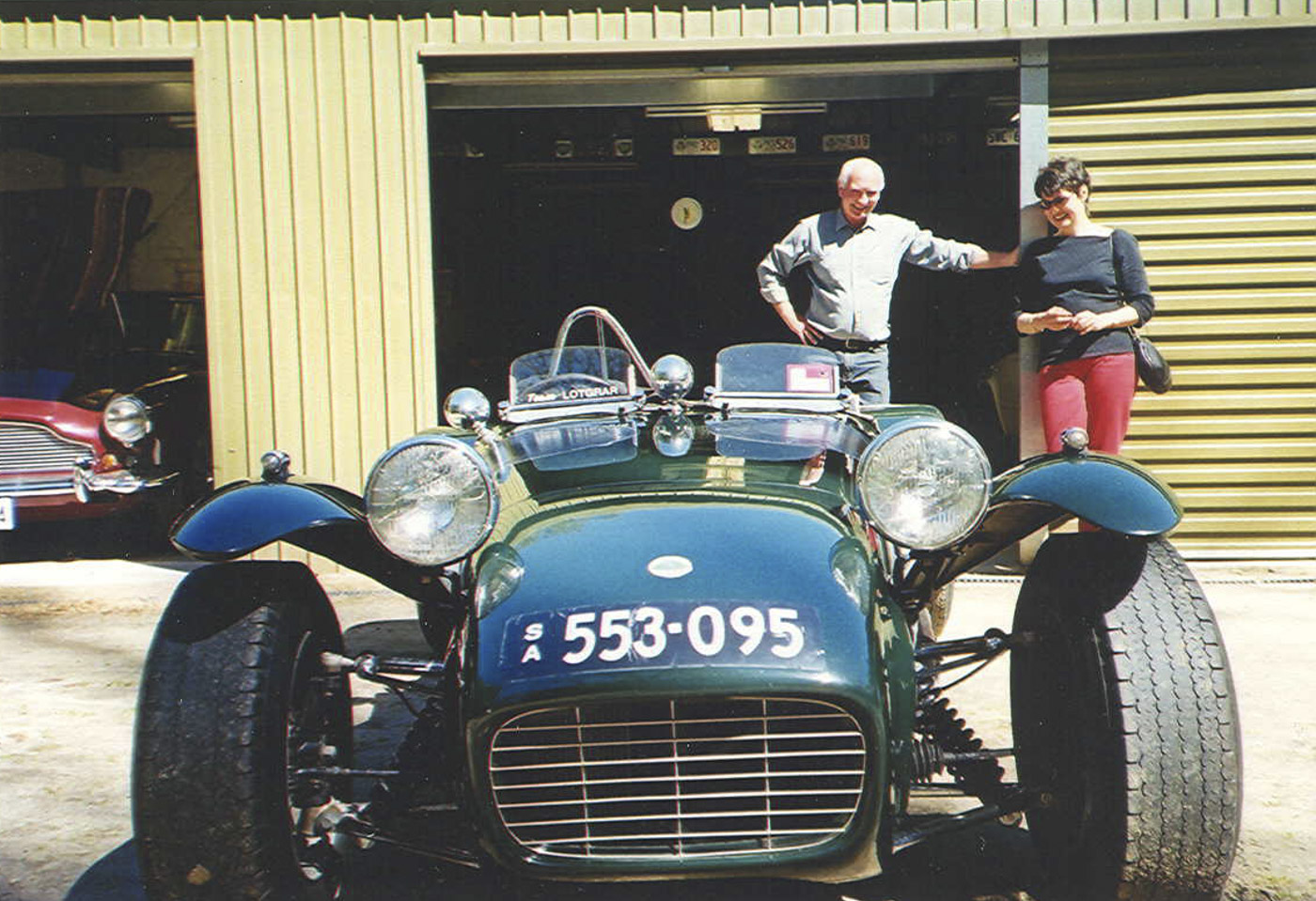
2 Comments on “Lotus Stories: A Little History of Phil Moore’s Lotus Super 7, Which He Owned for 53 Years”
What a great story, it’s good to know that there are Lotus enthusiasts who love the cars enough to keep them 50 years.
Great to hear from someone else who admired Phil Moore. As a young flag marshal in WA I have terrific memories of chatting with Phil when he raced his superb V8 Repco powered Elfin 360 at Wanneroo. The wonderful sound of Phil winding that engine out down the main straight at Wanneroo in close company with Henry Michel’s identical car was simply unforgettable – as was that gentleman Phil Moore.